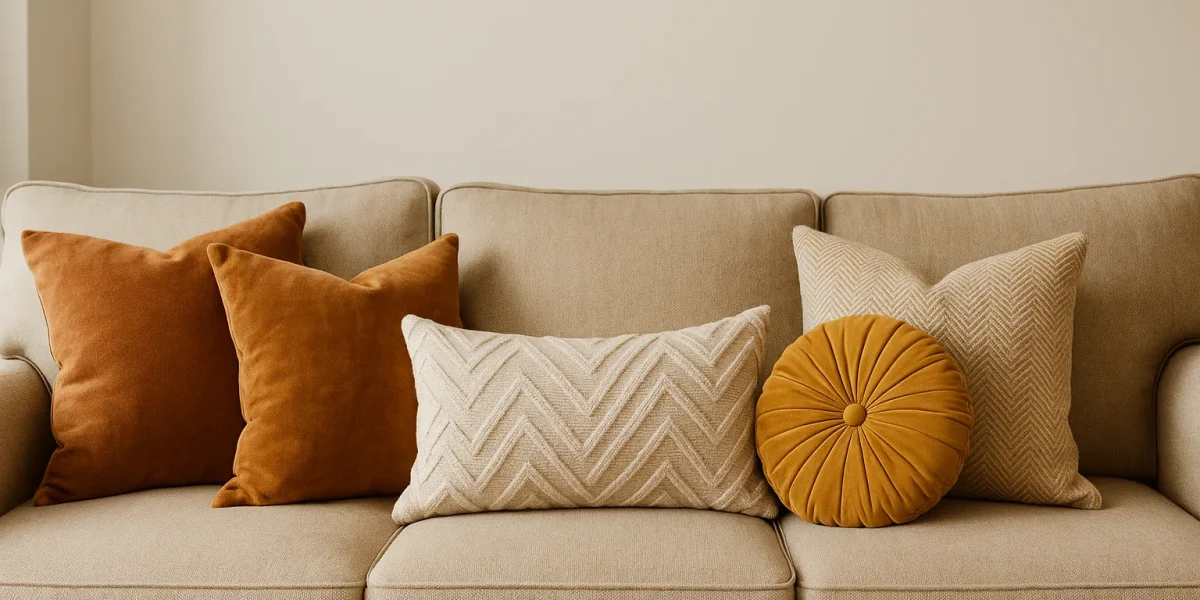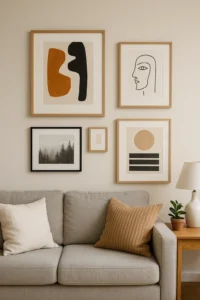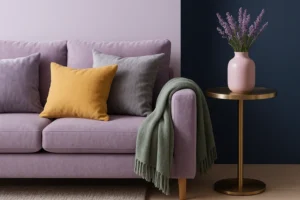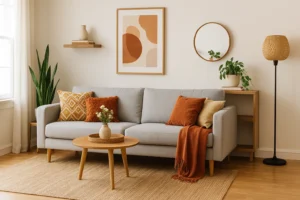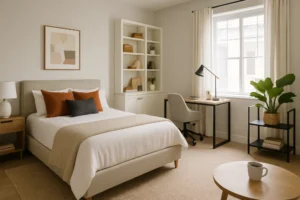When it comes to living room design, the couch often takes center stage. It’s the anchor of the room, the place where people gather, relax, and—if we’re being honest—sometimes even nap. But there’s one simple, often underestimated design trick that can completely change the look and feel of your sofa: the pillows. Yes, knowing how to style pillows on a couch is an art that blends design principles with personal comfort. Get it right, and your living room feels inviting, polished, and effortlessly chic. Get it wrong, and things can look cluttered, awkward, or unfinished.
This guide walks you through every step—sizes, colors, patterns, textures, and layouts—so you’ll know exactly how to make your sofa look styled without sacrificing comfort.
Start With the Right Pillow Sizes
Before diving into colors and fabrics, let’s begin with the basics: size. Pillow size is the foundation of styling. Think of it as setting the stage before the performance.
- Standard square pillows usually come in 18×18 or 20×20 inches. These are versatile, widely available, and work for most couches.
- Oversized pillows (22×22 or even 24×24) are great for sectionals and deep couches. They bring a plush, cozy vibe.
- Lumbar pillows (rectangular shapes like 12×20) are perfect for balance. They break up the monotony of squares while offering actual back support.
- Round or bolster pillows add a fun twist. They’re less common, which makes them stand out as accent pieces.
A golden rule: mix sizes. Pairing larger pillows at the back with smaller, varied shapes in front creates depth and visual interest. If all your pillows are the same size, your couch will look flat and uninspired.
Play With Shapes and Textures
Shape variety adds life, but texture is what makes your couch feel alive. Smooth fabrics alone can feel dull. Mix them.
- Velvet brings in luxury.
- Linen creates a light, breathable feel.
- Chunky knits or faux fur scream cozy.
- Leather or suede adds sophistication.
Here’s a practical tip: think seasonal. Lighter textures like cotton and linen work beautifully in spring and summer, while heavier fabrics like velvet, wool, or faux fur are best suited for fall and winter. Swapping textures is an inexpensive way to make your living room feel in sync with the time of year.
Mastering the Mix of Patterns
Pattern play can be intimidating, but here’s the formula: combine three types of designs—a solid, a simple pattern, and a bold print. That’s it.
Example:
- Solid navy pillow
- Subtle pinstripe pillow
- Bold floral pillow with navy accents
The trick is cohesion. Patterns should share at least one color with the rest of your décor. If your rug has hints of sage green, introduce that shade in a patterned pillow. This ties the room together without making it look like a pattern explosion.
And remember, balance matters. If you’ve got one bold print, let the other pillows play supporting roles. Not every cushion needs to shout.
Stick to a Cohesive Color Palette
Colors set the mood. They decide whether your couch feels calm and airy or bold and dramatic. When learning how to style pillows on a couch, the easiest way to succeed is to pick a palette that complements your space.
Here’s how:
- Look around your living room. What colors dominate? Rug, curtains, or wall paint often dictate the palette.
- Choose a base. Neutrals like beige, gray, or cream make versatile backdrops.
- Add accents. Pull in two or three complementary colors. For instance, if your living room has earthy tones, pair tan pillows with deep green and rust-orange accents.
A 60-30-10 ratio works well:
- 60% neutral base
- 30% complementary secondary color
- 10% bold accent
This formula keeps the arrangement visually balanced but never boring.
Layer Like a Pro
Here’s where the magic happens: layering. Think of it like styling an outfit. You wouldn’t wear five statement necklaces at once. Instead, you’d combine basics with one standout piece. Pillows work the same way.
- Back layer: Large, neutral pillows to ground the look.
- Middle layer: Medium pillows with subtle patterns or secondary colors.
- Front layer: A bold pillow or unique shape that makes a statement.
Pro tip: odd numbers often look more natural. For a casual vibe, arrange three or five pillows. For a more formal, symmetrical look, stick with pairs.
Style According to Couch Type
Not all couches are created equal, and your pillow arrangement should reflect that.
- Sectionals: Balance is key. Don’t overload one side with pillows. Spread them evenly while allowing a few accent pieces to shine.
- Standard three-seater: Two to four pillows are usually enough. Any more, and it looks overcrowded.
- Loveseat: Less is more here—two pillows with varied sizes or patterns can be plenty.
- Oversized couches: These can handle six or more pillows. Use size variation to keep it from looking monotonous.
Always leave room for people to sit comfortably. A beautiful couch should still be functional.
Seasonal and Occasion-Based Styling
One of the best things about pillows? They’re easy to switch out. Use them as tools to refresh your living room throughout the year.
- Spring/Summer: Bright colors, lightweight fabrics, and playful patterns. Think linen covers in pastel tones or bold tropical prints.
- Fall/Winter: Deeper hues, cozy textures, and warmth. Swap in velvet or knit pillow covers in jewel tones like emerald, burgundy, or navy.
- Holidays: Festive touches are great but don’t overdo it. A few seasonal pillows mixed with your everyday ones strike the right balance.
This approach lets you refresh your couch without buying new furniture every season.
Keep It Practical
Design should never come at the cost of comfort. Styling pillows should make your couch more inviting, not less usable.
- Avoid overcrowding. If guests have to move half the pillows to sit down, you’ve gone too far.
- Washable covers. Life happens—spills, kids, pets. Invest in removable covers that you can toss in the wash.
- Storage solutions. Use a basket or storage ottoman to rotate pillows seasonally or when entertaining.
Pro tip: Buy pillow inserts once and change only the covers. It’s budget-friendly and space-saving.
Small Adjustments, Big Impact
Here’s the truth: styling doesn’t need to be complicated. Sometimes, it’s just about rearranging what you already have. Swap one bold pillow for the front. Rotate textures seasonally. Add a lumbar pillow for balance. These little changes can make your couch feel brand new without spending a fortune.
And remember—pillows are not just decoration. They’re comfort. They’re the thing you reach for when you curl up with a book or settle in for a movie. So make them stylish, yes, but also make them work for you.
Conclusion
Learning how to style pillows on a couch is one of the easiest, most affordable ways to transform your living space. It’s about understanding size, mixing textures, balancing colors, layering with intention, and adapting to your specific couch type. Most importantly, it’s about finding that sweet spot where comfort meets design.
So don’t overthink it. Start small. Experiment with shapes, colors, and arrangements until it feels right. Your couch doesn’t just hold pillows—it holds the personality of your home.

